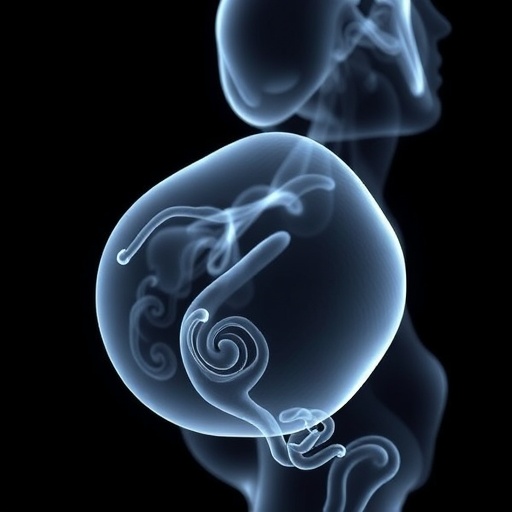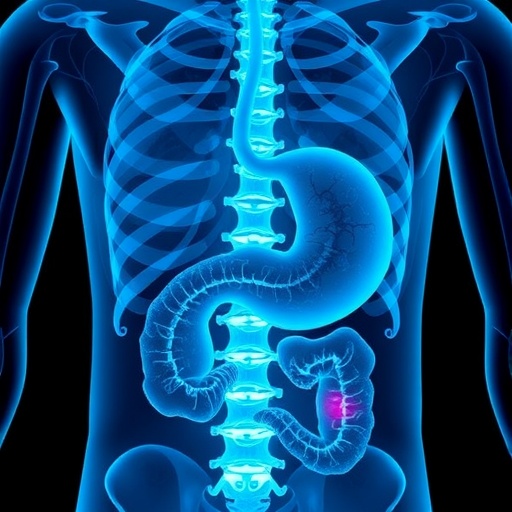Recent advancements in prenatal imaging are revolutionizing the way healthcare professionals approach the diagnosis and management of upper urinary tract abnormalities in fetuses. With the increasing reliance on magnetic resonance imaging (MRI) as a non-invasive diagnostic tool, a new study sheds light on its efficacy and clinical applications. This research, which is set to be published in the esteemed journal Pediatric Radiology, highlights critical aspects of utilizing MRI in such scenarios, a field that continues to evolve rapidly as technology progresses.
Traditionally, ultrasound has been the gold standard for prenatal imaging; however, it comes with inherent limitations, particularly when assessing complex structures and subtle abnormalities. The introduction of MRI into prenatal diagnostics provides a more detailed, three-dimensional view, allowing clinicians to gain insights that previously remained obscured. This is particularly significant for upper urinary tract issues such as hydronephrosis, renal agenesis, and ureteropelvic junction obstruction. MRI’s superior soft tissue contrast can delineate these conditions with far greater clarity than ultrasound.
In the study conducted by Mallin, Forbes-Amrhein, and Marine, the researchers examined the indications for employing MRI in prenatal assessments. They identified specific clinical indications where MRI not only adds value but may also be considered essential to confirm or rule out potential diagnoses. For instance, in complicated cases of hydronephrosis detected on ultrasound, MRI can offer a definitive assessment of urinary system anatomy and any associated anomalies, thereby shaping the management approach before birth.
Furthermore, the research addresses the timing and methodology for when MRI should be conducted during pregnancy. Recognizing the optimal window for imaging is crucial; the study suggests that late second trimester to early third trimester is typically preferable for conducting MRI scans. This timing aligns with anatomical developments in the fetus, allowing for a more accurate depiction of the urinary tract. Additionally, clinicians must consider maternal comfort and safety, as well as the potential need for sedation in certain cases.
However, one of the challenges that the researchers outlined is the availability of MRI technology and the necessity for experienced personnel on-site to interpret the images. Not all medical facilities have immediate access to MRI, which may lead to delays in diagnosis and management. This disparity could significantly impact patient outcome, making it essential for healthcare systems to bridge this gap in availability and expertise.
The authors also tackled the critical aspect of the safety of MRI for both the mother and the fetus. As a non-ionizing imaging modality, MRI poses minimal risk compared to traditional imaging techniques that utilize radiation. Despite this, the authors emphasized the importance of weighing the benefits against potential risks, ensuring that MRI is only utilized when there is a clear clinical indication.
An interesting focal point of the article is the role of multidisciplinary teams in interpreting MRI results. Accurate imaging doesn’t solely rely on technology; it also requires insights from urologists, pediatricians, and radiologists working collaboratively. This team approach can enhance diagnostic accuracy and improve patient outcomes, as each specialty brings its unique perspective to the evaluation of the images.
In addition to the technical and clinical aspects, the study advocates for increased education and awareness regarding the role of MRI in prenatal urinary tract assessments. As awareness grows within the medical community, the potential for improved diagnostic protocols and frameworks arises. Enhanced training and resources can empower practitioners, ensuring that MRI is used judiciously and effectively.
The implications of this research extend beyond immediate clinical applications. As prenatal imaging continues to advance, there is great potential for further exploration and refinement of methodologies, especially with ongoing technological improvements in imaging capabilities. This study is indeed a call to the medical field to evaluate current practices critically and adapt where necessary to incorporate new and effective techniques.
As healthcare providers lean towards more sophisticated imaging tools, ethical considerations also come into play. The interpretations and subsequent decisions derived from MRI results can significantly affect prenatal care and family planning. The study sparks an important dialogue on ensuring that patients are not only informed but also included in the decision-making processes regarding their care.
The advancements made by researchers in this domain illuminate a path toward a future where prenatal imaging can significantly shape neonatal outcomes. As societies grapple with increasing rates of congenital abnormalities, the role of advanced imaging technologies like MRI becomes more crucial. For parents-to-be, this means a potential for earlier diagnoses and better preparation for managing any predetermined health challenges.
Overall, Mallin, Forbes-Amrhein, and Marine make a compelling case for integrating MRI into the clinical workflow surrounding prenatal care for upper urinary tract anomalies. As the field of prenatal diagnostics evolves, embracing these innovations can pave the way for improved maternal and fetal health outcomes.
By adopting cutting-edge techniques, the medical community can harness the power of MRI to transform prenatal diagnostics. As further studies unfold, we may witness a paradigm shift in how hospitals and clinics approach complex cases, with MRI poised to become a cornerstone of effective prenatal care strategies.
Subject of Research: Prenatal imaging of upper urinary tract abnormalities
Article Title: Prenatal imaging of upper urinary tract abnormalities: when is MRI useful?
Article References:
Mallin, S., Forbes-Amrhein, M. & Marine, M. Prenatal imaging of upper urinary tract abnormalities: when is MRI useful?.
Pediatr Radiol (2025). https://doi.org/10.1007/s00247-025-06465-2
Image Credits: AI Generated
DOI: 28 November 2025
Keywords: MRI, prenatal imaging, urinary tract abnormalities, congenital anomalies, maternal-fetal medicine, ultrasound, hydronephrosis, imaging technology, multidisciplinary teams, fetal safety.
Tags: advances in prenatal diagnosticsclinical applications of MRIhydronephrosis diagnosis in fetusesMRI in prenatal imagingnon-invasive diagnostic toolsPediatric Radiology studyprenatal urinary tract abnormalitiesrenal agenesis prenatal assessmentthree-dimensional imaging in healthcareultrasound limitations in prenatal careupper urinary tract imagingureteropelvic junction obstruction imaging





